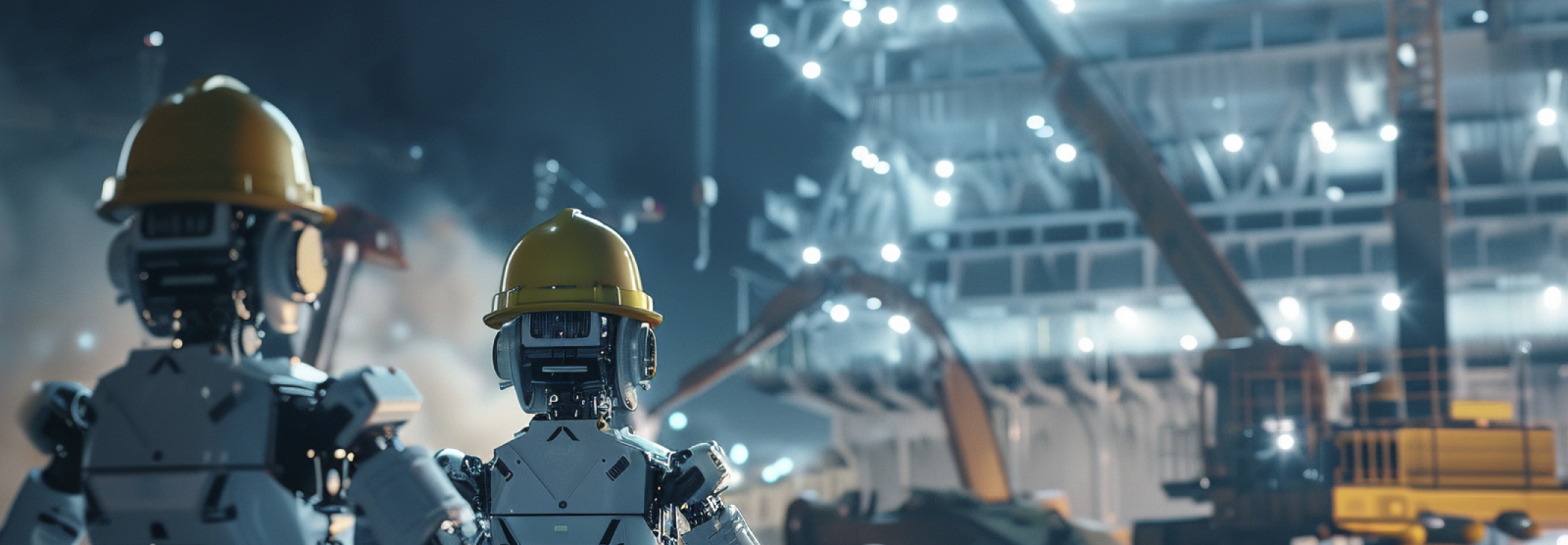Engineering, Construction, Property

Technology is reshaping Engineering, Construction, and Property by enabling smarter, faster, and more sustainable development. Advanced engineering tools like AI and generative design optimize structures for efficiency and resilience, while modular construction and 3D printing accelerate project timelines. Smart buildings leverage IoT and automation to enhance energy efficiency, security, and occupant comfort. Real-time data analytics improve site safety, resource management, and predictive maintenance, reducing costs and delays. In property, proptech innovations—from virtual tours to blockchain-based transactions—streamline buying, leasing, and facility management. These advancements are not only minimizing environmental impact but also transforming urban landscapes, creating smarter cities and future-proof infrastructure.
AI-Based Project Risk Assessment in Engineering, Construction & Property
The engineering, construction, and property (ECP) industry loses $300B+ annually due to cost overruns and delays, with 65% of projects failing to meet initial budgets (McKinsey, 2023). AI-powered risk assessment is revolutionizing project planning—leveraging machine learning, natural language processing (NLP), and digital twins to predict risks with 85-92% accuracy before ground is broken. Early adopters (AECOM, Turner Construction, Lendlease) achieve 30-50% fewer delays and 15-25% cost savings by proactively mitigating risks ranging from supply chain disruptions to safety hazards. This whitepaper demonstrates how AI shifts risk management from reactive to predictive, turning historical data into future-proof decision-making.
Autonomous Construction Equipment
The global construction industry faces a $1.6T productivity gap, with labor shortages and inefficiencies delaying 70% of projects (McKinsey, 2023). Autonomous construction equipment—such as bricklaying robots, self-driving excavators, and AI-powered cranes—is transforming the sector by increasing productivity by 30-50%, reducing labor costs by 20-40%, and improving worksite safety by 60%. Companies like Built Robotics, Fastbrick Robotics (Hadrian X), and Komatsu are leading the charge, deploying machines that operate 24/7 with millimeter precision. This whitepaper explores how autonomous construction technology is reshaping project timelines, cost structures, and workforce dynamics.
Generative AI for Architectural Design
The architecture, engineering, and construction (AEC) industry is undergoing a paradigm shift as generative AI redefines the design process. By leveraging algorithms that produce thousands of optimized design options in minutes, firms can reduce concept-to-construction timelines by 40-60%, cut design costs by 25-35%, and enhance sustainability compliance by automating energy efficiency analysis. Leading firms like Zaha Hadid Architects, Gensler, and Arup are already using tools like MidJourney for Architecture, TestFit, and Hypar to generate AI-assisted blueprints, façade variations, and urban planning models—achieving unprecedented creativity and efficiency. This whitepaper explores how generative AI is enabling data-driven, client-centric design at scale.
Predictive Maintenance for Smart Buildings
Smart buildings waste $0.50/sqft annually on reactive equipment repairs and unnecessary maintenance (JLL, 2023). Predictive maintenance (PdM) powered by IoT sensors and machine learning is transforming facility management—reducing HVAC failures by 40-60%, cutting energy waste by 15-25%, and extending asset lifespans by 3-5 years. Early adopters like CBRE, Siemens, and Equiem achieve 90%+ accuracy in forecasting equipment failures 7-30 days in advance, turning buildings from cost centers into AI-optimized assets. This whitepaper demonstrates how PdM combines real-time data analytics, digital twins, and prescriptive AI to revolutionize building operations.
